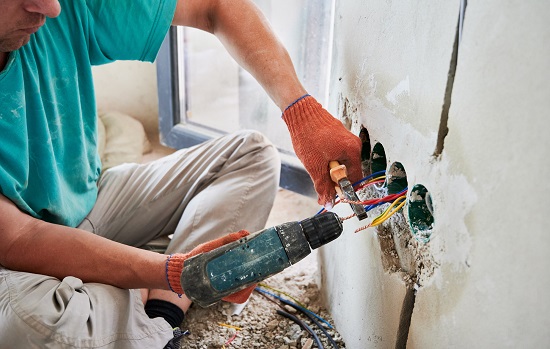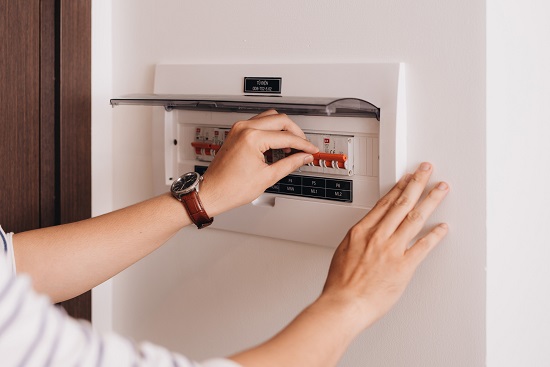As households use increasing numbers of gadgets and devices that require more substantial electricity, there is a growing need for improving the electrical wiring in homes. The time when a single television, a few bulbs, and cooking equipment accounted for most electrical needs is now a distant memory.
Many computers, televisions, video gaming systems, device batteries and chargers, and other electrical devices can now be plugged into outlets throughout the house. With upgraded electrical wiring, it will be possible to safely and effectively obtain the required power. Since wiring installed fifty years ago typically cannot support current electrical requirements, if you reside in a house built before 1960, the new electrical wiring might be more pressing than ever. If you suspect something is amiss, do not put it off because faulty or hazardous wiring is one of the leading causes of house fires.
So, to increase the effectiveness of your electrical system, contact thelocalelectrician.com.au for an electrical inspection and familiarize yourself with a few ways to upgrade the wiring in your home:
Go For Copper Wiring
Your primary concern should be ensuring that your property’s electrical wiring system is of the most outstanding caliber. A qualified electrician can advise you on the amount of amperage needed for your house based on how many appliances you require.
The fact that aluminum wiring frequently becomes loose with use, leading to overheating and even flames at receptacles, makes it a threat to safety. You must decide on electrical wires with various amp ratings, such as 200-amp wiring, keeping amperage in mind. Aluminum wiring should be avoided in favor of higher-priced copper wiring because copper wiring has a much lower chance of overheating and igniting a fire in the electrical system.
Although copper wiring may cost more initially, it will unquestionably save you money. Purchase copper wire in bulk to reduce one-time costs once you are confident of the gauge and voltage of your electrical installation.
Install A Ground Fault Circuit Interrupter (GFCI)
People have put GFCIs along counters and walls in the basement to save us from this tragic fate because we are constantly afraid of electrocution. Through the use of these gadgets, we have learned that the likelihood of getting an electrical shock is significantly decreased while in moist areas, such as sinks and bathrooms. The most important thing to take care of in any house with outdated electrical wiring is to install GFCIs. GFCIs are affordable devices that guard against electrocution in particularly humid environments.
However, since peculiar modifications to your breaker panel or wiring layout might be needed, it is always preferable to have a qualified electrician complete the job for you. If this is not attainable, additional manual installation methods for GFCIs can assist in guarding against electric shocks from fuse blowouts.
Install Arc Fault Circuit Interrupter (AFCI)
Make sure you have Arc Fault Circuit Interrupters (AFCIs) installed in the sleeping areas if you want your home to get through an electrical assessment with excellent scores. In the case of electrical overloading, AFCIs function to break the circuit, eliminating fires from occurring.
Without AFCIs, your house is unlikely to get an excellent electrical assessment report, which will lower the property’s purchase or rental worth. Each of the fifty states in the United States mandates them in bedrooms, and some also order them in all-house circuits.
Install A Subpanel
Adding a sub-panel is the quickest and most comprehensive way to update the electrical wiring in your house. Subpanels are two-pole breaker-wired routing stations that have connections to the central breaker box. You are allowed to have a limitless number of subpanels as long as your usage is under your service’s capacity rating.
You can avoid routing all of the circuit lines from the system entrance panel by installing subpanels in high-traffic areas where you will route your branch electrical circuits from those subpanels. With this approach, runs are less lengthy and more direct, which saves both money and time.
Extending A Circuit
The most straightforward method to expand an electrical wiring system is probably by extending the current circuit. If you frequently use extension cables, which are not designed for long-term endurance and safety, you might think about doing this. A hot and neutral wire must be directly connected to the electrical supply at the service box to tap into a preexisting circuit. Any switch, outlet, or lighting fixture that is reachable may be selected. Also, when doing so, ensure have an electrician with experience handles the work.
Conclusion
Hire a certified electrician to do an electrical assessment on your house as soon as possible if it is between twenty and thirty years old. It is time to update your home’s electrical wiring if you routinely experience problems with discolored two-pronged outlets, circuit breaks, old exposed wires, broken appliances, or tripping fuses.
It can be a little unsettling to have the electricity to your residence cut off when replacing electrical wiring. The positive aspect is that you may opt to have an electrician with experience conduct the task for you with assurance and total peace of mind. Always keep in mind that adequately installed premium electrical wiring can last for generations.












